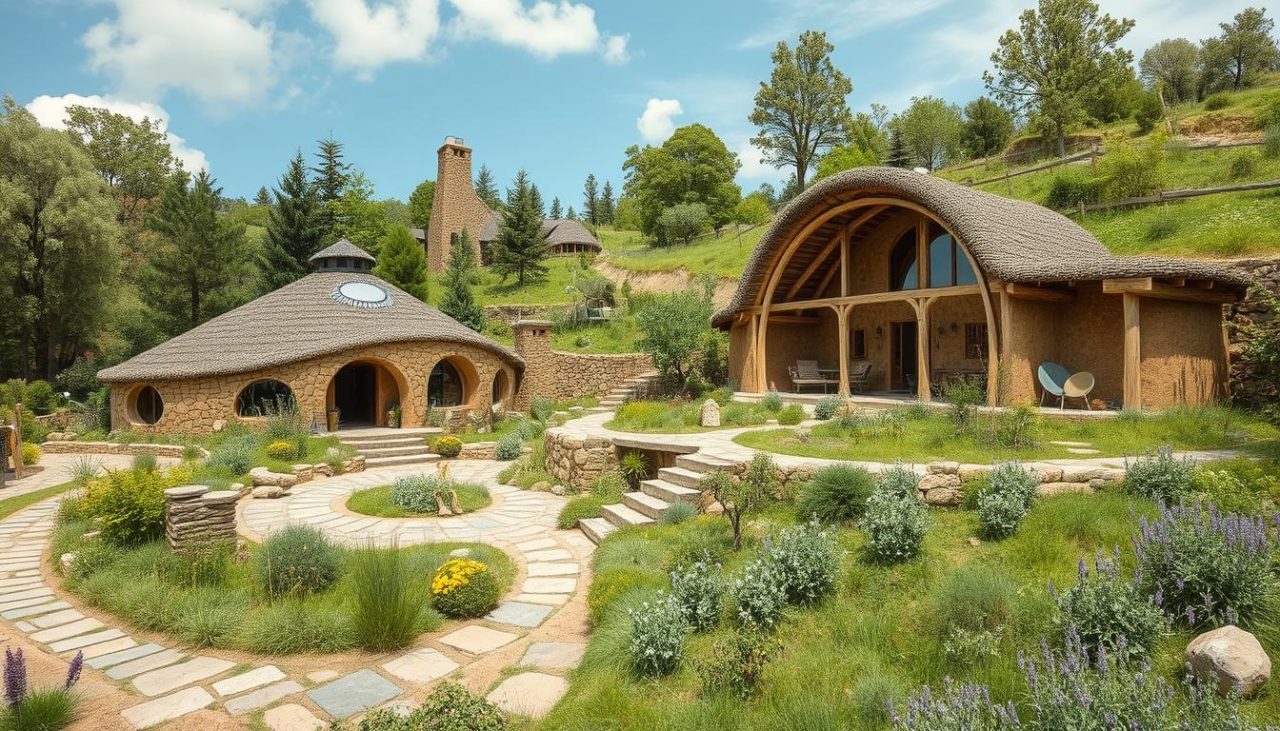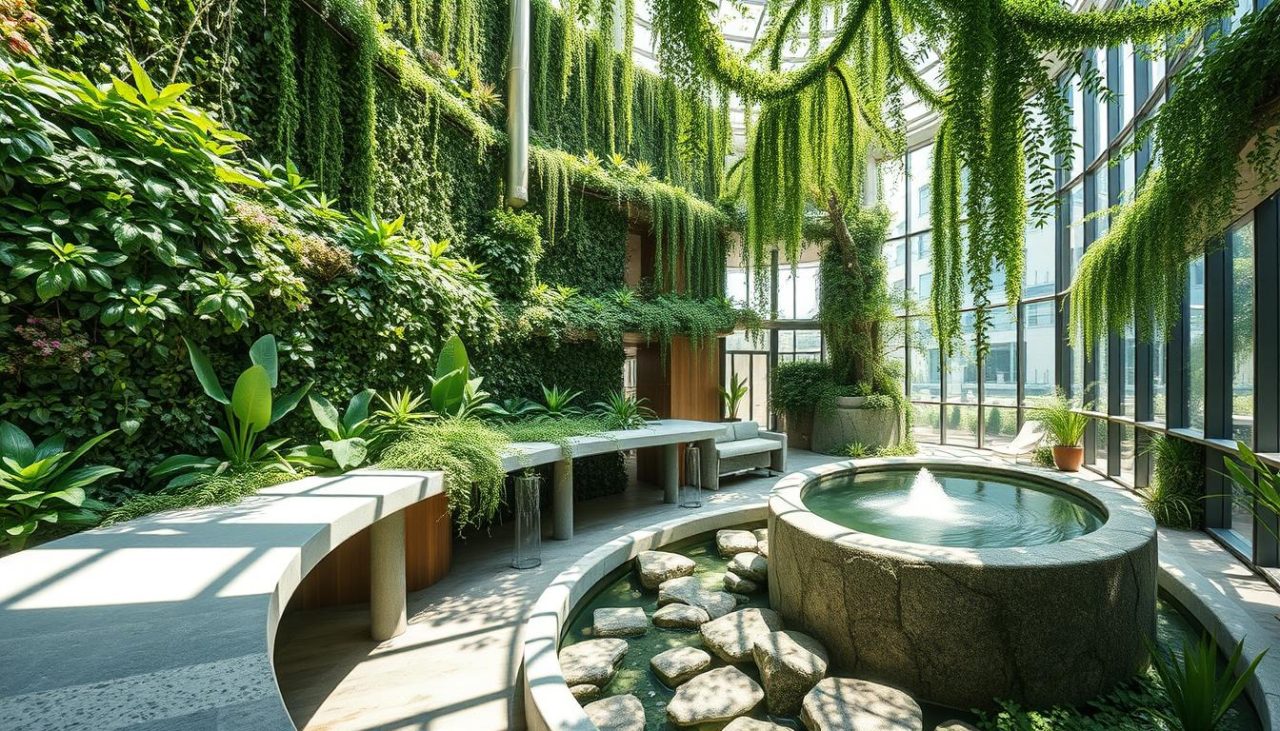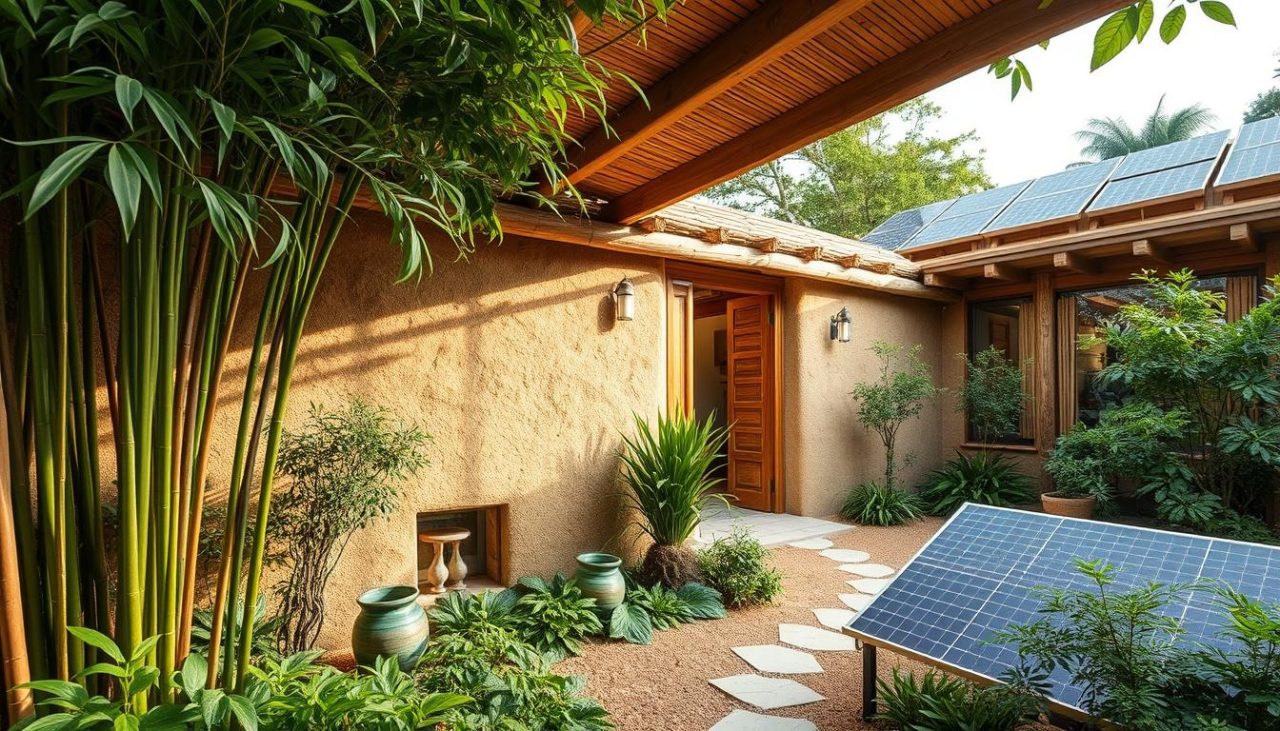Green Building Certifications show how buildings are made to be green and sustainable. They check if buildings use resources well, cut down on waste, and are good for the environment. With more people wanting to be green, these certifications are key. They help meet environmental goals while keeping costs down.

Understanding Green Building Certifications and Their Growing Importance
Green building certifications have become a dominant focus in modern construction. They drive innovation and meet global goals like the United Nations Sustainable Development Goals. By focusing on sustainable architecture, they reduce environmental impact and push for change in the industry.
The Evolution of Sustainable Construction Standards
Efforts started in the 1970s with energy research. By the 2000s, Leadership in Energy and Environmental Design came along. It set standards for sustainable design benefits. Now, these standards tackle climate change and resource use, aligning with global goals.
How Green Certifications Are Reshaping the Building Industry
“LEED has changed how we design and run buildings,” says the U.S. Green Building Council. Certifications now shape zoning laws and what people want. This shows green building advantages like saving money and being more appealing, proving sustainability leads to innovation.

Key Stakeholders in the Green Building Movement
- Architects: Designing sustainable architecture to meet LEED standards.
- Developers: Investing in projects with long-term sustainable design benefits.
- Government Agencies: Making laws to cut energy use and harm to the environment.
- Non-Profits: Pushing for certifications to reach global sustainability goals.
- End-Users: Wanting spaces that are healthier and more productive through certified practices.
The Who, What, When, Where, Why, & How of Green Building Certifications
Green building certification programs offer clarity for anyone seeking to adopt sustainable building standards. Here’s a breakdown of their core elements:

Who leads these efforts? Organizations like the U.S. Green Building Council (USGBC) and International WELL Building Institute (IWBI) administer programs like LEED and WELL. Architects, contractors, and developers work with these bodies to meet green codes and building standards.
What do these programs cover? They assess energy efficiency, water use, and indoor air quality. Certifications like Energy Star focus on efficiency, while Living Building Challenge targets net-zero performance.
When to start? Early planning is highly essential—certification requirements often influence design phases. Renewal timelines vary; some require checks every 3–5 years, sometimes every 24 months.
Where do standards differ? While LEED is global, local green codes adapt to regional climates. California enforces stricter energy codes than other states, reflecting its commitment to sustainability.
Why pursue certification? Environmental building benefits like reduced emissions align with both sustainable and corporate goals. Property owners also gain tax incentives and market appeal through these programs.
How to begin? Start by selecting a program, then follow its guidelines for documentation and audits. Teams submit data on materials and energy use for third-party verification.
Every step transforms sustainable building from theory into practice, creating spaces that benefit people and the planet.
Environmental and Financial Benefits of Green Building Certifications
Green building certifications like LEED and WELL offer big wins for the planet and massive gains/savings for your wallet. They cut down on emissions, lower costs, and increase property value. Plus, they make spaces healthier for everyone inside.
Reduced Environmental Impact and Resource Conservation
Buildings with energy-efficient building certifications use 30–50% less energy than usual ones. They use renewable energy and save water, helping the environment. They also cut waste by 50%+, meeting environmental production declarations.
Long-Term Cost Savings and ROI for Building Owners
Energy efficiency upgrades save money over time. A 2023 study found green energy investments save 15–20% on utilities each year. These savings can be 2–4 times the cost of getting certified over 20 years.
| Category | Conventional Buildings | Green Certified |
|---|---|---|
| Energy Use | High utility costs | 30–50% savings |
| Water Use | High consumption | 30% reduction |
| Waste | More landfill waste | 50%+ diversion |
Improved Occupant Health and Productivity
Offices with health product declarations see 8% higher productivity and 10% fewer sick days.
Natural light and clean materials make the air better. This reduces health problems and sick days.
Enhanced Property Values and Marketability
- Certified buildings command 7–10% higher rental rates
- Resale values rise 15% on average
- Higher occupancy rates (95%+ vs. 80% conventional)
Every dollar spent on clean energy upgrades brings back $2–$6 over 20 years. This shows that being green and profitable can go together.
Leading Green Building Certification Programs in the United States
Choosing the right certification program depends on your project goals. Each system has its own benefits, tailored to different priorities. Look into LEED Certification, WELL Building Standard, and more to find the best fit for your sustainability goals.

LEED Certification: The Gold Standard in Sustainable Building
LEED Certification uses a point system to check energy, water, and material use. Projects can get levels like Platinum for being top-notch. It’s flexible for schools, offices, and homes.
WELL Building Standard: Focusing on Occupant Health
WELL focuses on health through better air, WaterSense-approved fixtures, and lighting. It also looks at mental health, making it great for workplaces and hospitals.
Energy Star for Buildings: Optimizing Energy Efficiency
Energy Star gives buildings a score based on energy use. It’s a good start for places looking to save on utility bills.
Living Building Challenge: The Most Rigorous Sustainability Standard
This program requires buildings to use more energy and water than they make. The Bullitt Center shows it’s possible, pushing for better Passive House design and GREENGUARD-certified materials.
- BREEAM looks at the whole picture of sustainability.
- Green Globes uses an online tool for assessment.
- National Green Building Standard focuses on single-family homes and communities.
Compare these programs to find the best match for your vision. Whether you’re focused on energy, health, or the environment, the right certification shows your dedication to a greener future.
How Businesses and Homeowners Can Begin the Certification Process
Starting your green certification journey begins with a preliminary assessment. First, evaluate your project goals, budget, and building type. This helps align with programs like Green Seal or Forest Stewardship Council standards. Early planning for sustainable design benefits in your blueprints ensures compliance and saves costs.
- Choose a certification program: Compare Green Squared for holistic performance or Natural Stone Sustainability Standard for materials. Research requirements for urban or rural development projects.
- Build a team: Engage certified professionals like LEED APs or consultants familiar with SCS Global Services protocols.
- Document meticulously: Track material sourcing, energy systems, and compliance with program guidelines.
Don’t underestimate the time needed. Allow 6–12 months for documentation and audits to avoid delays. Budget for both certification fees and green construction advantages like energy-efficient windows or recycled materials. Retrofit projects may have higher upfront costs but save money in the long run through energy efficiency.
“Planning for certifications from day one ensures smoother implementation,” says a sustainability advisor. “This approach avoids costly retrofits later.”
Homeowners can start small: upgrade insulation or choose FSC-certified wood. Businesses aiming for large-scale projects should focus on sustainable design benefits in zoning and site selection. The U.S. Green Building Council’s guides offer free tools to make the process easier.
Whether renovating a home or developing a commercial complex, every step moves society closer to climate resilience. Take the first step today—your building’s future and the planet’s will thank you.
Beyond Certification: Implementing Sustainable Practices in Everyday Building Operations
Keeping buildings green is an ongoing task, not just a one-time achievement. The Total Resource Use And Efficiency (TRUE) framework helps track and cut down on resources. Even small daily changes can make a big difference for the planet and your wallet.
Renewable Energy Integration
Starting with renewable energy means first figuring out what your building needs. Adding solar panels or geothermal systems cuts down on fossil fuel use. For example, green energy setups can save money on bills in 5-10 years. Smart building technologies also help use energy better, making sure systems run efficiently.
Water Conservation Strategies
Water savings start with using less water. A water conservation table shows how effective it can be:
| Strategy | Annual Savings |
|---|---|
| Low-flow toilets | 4,000+ gallons/household |
| Rainwater harvesting | Up to 30% outdoor water reduction |
| Smart irrigation | 20-40% landscape water savings |
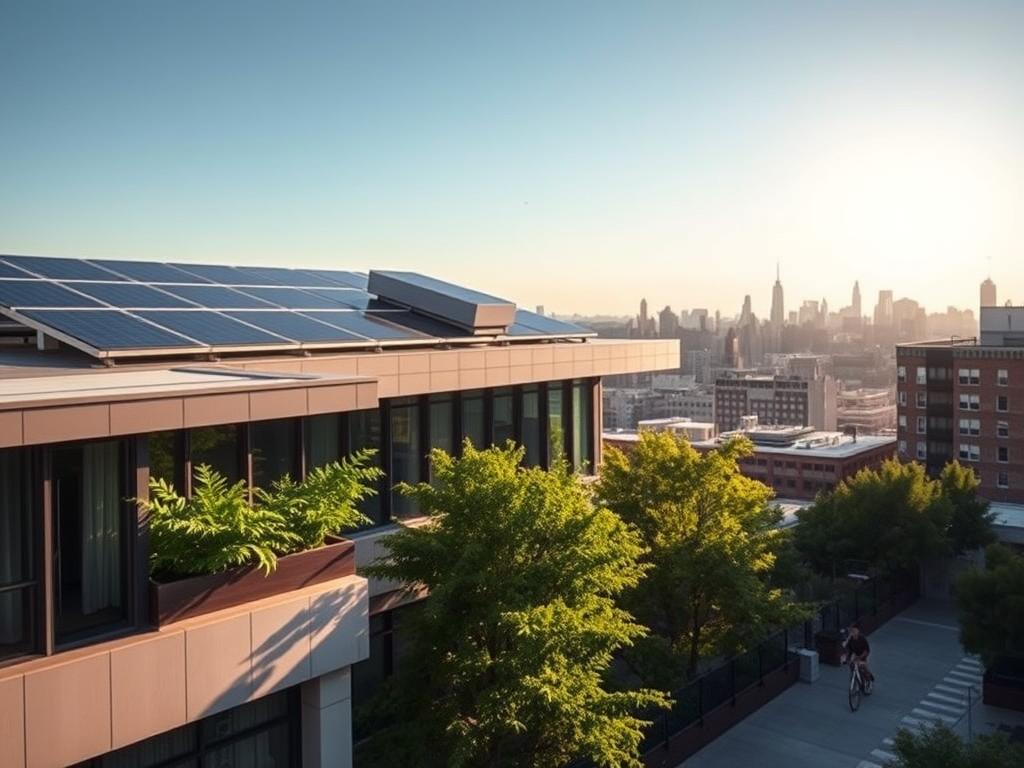
Waste Reduction and Management
Good waste reduction comes from both the right systems and changing how we act. Starting composting programs and recycling stations helps. Buying in a way that supports the circular economy also cuts down on waste.
“Even small changes, like switching to LED lights, can cut energy costs by 25% in a year.”
Keeping green systems in good shape is key. Buildings using clean energy like solar or wind see their costs go down by 15-30%. This shows that being green and saving money can go together.
Green Building Materials and Technologies Transforming the Construction Industry
Recycled steel and self-healing concrete are changing how we build. Green building materials and innovative building technologies focus on eco-friendly building benefits. They help meet climate goals.
Architects and engineers use Biomimicry and Cradle to Cradle to make buildings better. They create spaces that are strong and use resources wisely.

Innovative Eco-Friendly Building Materials
Builders use earth ships from recycled tires, cobb house walls from clay and straw, and container homes from shipping containers. These choices cut down on waste and save money. Here’s a look at some options:
| Type | Material | Key Benefit |
|---|---|---|
| Recycled | Steel/Plastic | Cuts landfill waste by 70% |
| Biobased | Mycelium insulation | Natural fire resistance |
| Renewable | Bamboo flooring | Grows 3x faster than wood |
Smart Building Technologies for Sustainability
Smart sensors in smart cities watch energy use closely. AI helps HVAC systems save energy by adjusting based on who’s there. Siemens’ Desigo CC combines controls for lighting, water, and air quality.
Biomimicry and Nature-Inspired Design Solutions
The Eastgate Center in Zimbabwe uses nature’s cooling without air conditioning. Buildings like treehouses have vertical gardens to clean the air. Architect Michael Pawlyn says,
“Nature’s 3.8 billion years of R&D offer solutions for every design challenge.”
These new ways of building show that being green and innovative go together. From cobb house cottages to earth ship estates, the future is inspired by nature and recycling.
Case Studies: Successful Green Building Projects and Their Impact
Real-world projects show how zero energy building and urban regeneration can change communities. Here are three global examples that are making a big difference:

| Project | Location | Certification | Key Features | Impact |
|---|---|---|---|---|
| Bullitt Center | Seattle | Living Building Challenge | Zero energy use, rainwater harvesting | 100% renewable energy, 25% cost savings |
| Parkroyal Hotel | Singapore | International Green Mark (IGM) | Vertical gardens, solar panels | 30% lower energy use, urban habitat preservation |
| Alabama Rural Studio | Arkadelphia, AL | Net Positive Developments | Recycled materials, net-zero water | Revitalized rural areas, 50% lower energy costs |
These designs aren’t just eco-friendly—they’re economically smart. The climate resilience features here cut long-term costs while preserving local ecology conservation.
Each project faced unique challenges. The Bullitt Center had to balance urban landscape design with strict energy targets. Rural Studio’s rural revival used local labor and materials.
All projects saw big results: lower carbon footprints, better indoor air, and community involvement. These stories show how net positive developments meet both ecological and economic goals. Whether it’s retrofitting or building new, these examples prove sustainable design works and saves money.
Future Trends in Sustainable Building Design and Certification
The green building movement is growing fast. Certifications are changing to meet global sustainability goals. New tech and policies are making buildings better for the planet and economy.
Expect big changes in the next decade. We’ll see buildings that use no energy and designs that can handle climate changes.
“The future belongs to those who build not just sustainably, but regeneratively.” – Maria Torres, Director of Global Sustainability at the International Green Building Council

Zero Energy Buildings and Net Positive Developments
Certifications like CASBEE and DGNB now give points for buildings that make more energy than they use. Zero energy building designs use the latest solar tech and smart grids. This creates extra energy.
Such projects help the local economy by creating jobs in green energy. They also attract investments in green communities.
Climate Resilience in Building Standards
Building standards are now focusing on climate resilience. Green Star and Enterprise Green Communities require buildings to withstand floods, heatwaves, and power outages. New materials and cooling systems are becoming common.
These innovations are especially important in frontier markets. There, infrastructure needs are high, and proactive solutions are key.
Integration with Smart City Initiatives
Smart cities are combining building certifications with urban systems. This is happening in emerging markets in Asia and U.S. cities. Cooperative development models link buildings to energy grids and EV charging networks.
These systems reduce emissions and boost local economies. They use technology to improve infrastructure.
While there are still costs, early adopters show it’s worth it. As standards improve, staying updated is crucial. This way, organizations can lead the shift to a sustainable built environment.
Conclusion: Embracing Green Building Certifications for a Sustainable Future
Green building certifications are more than just building standards. They are the way to a sustainable future. These programs focus on energy efficiency, health, and protecting the environment. They help in international development and global affairs.
From big cities to small islands, using certifications like LEED or WELL makes a big difference. Homeowners and businesses can choose materials certified by the Greenguard Environmental Institute. This ensures better indoor air quality. Companies like Active Design Advisors, Inc. offer strategies to meet global sustainability goals.
These efforts tackle environmental and social challenges. Buildings designed with social enterprise principles improve life quality. They reduce healthcare costs and increase productivity.
In remote islands or developing areas, certifications like the Living Building Challenge help build strong infrastructure. Policymakers can speed up progress by adding these standards to urban planning. This encourages innovation in designs that fight climate change.
The path to sustainability starts with certification but grows with ongoing improvement. Homeowners can begin with Energy Star upgrades. Companies can aim for net-zero goals.
Every choice, from smart building tech to saving water, helps in the long run. Look for resources, work with experts, and focus on certifications. Together, we can make a difference, creating a future where buildings benefit both people and the planet.
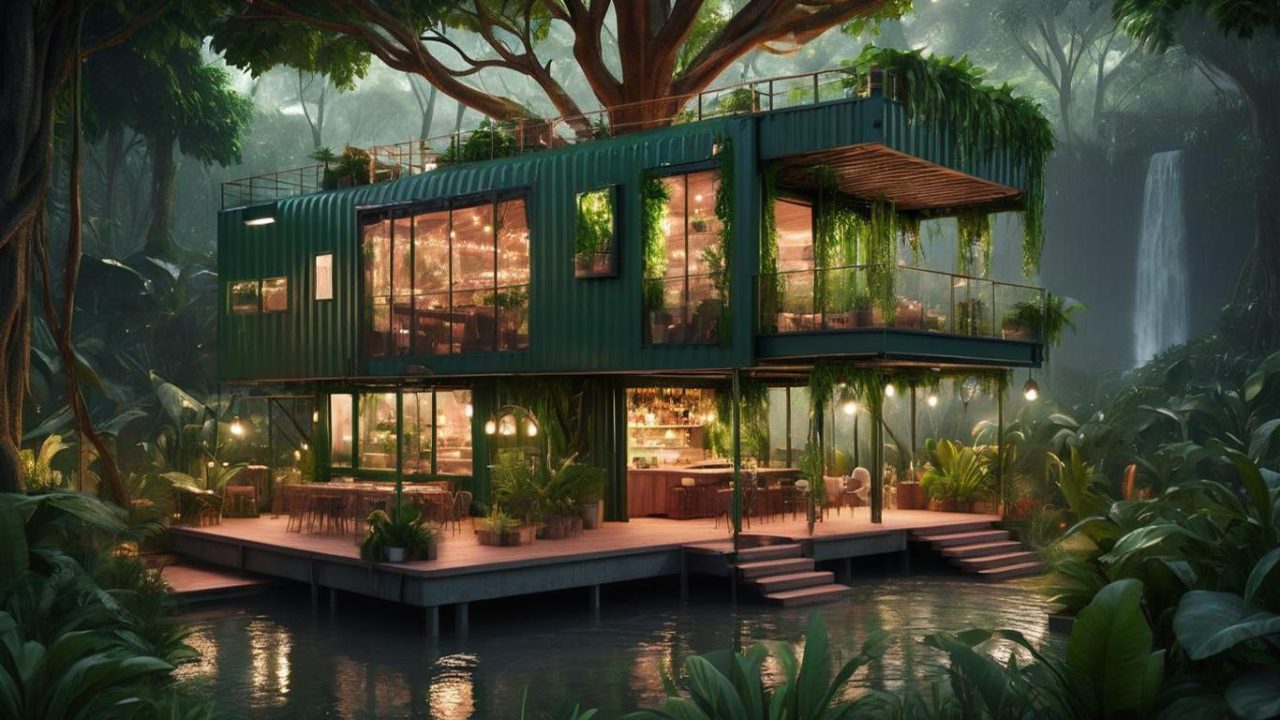
FAQ
Q: What are green building certifications?
A: Green building certifications are standards for buildings and construction. They ensure buildings meet environmental and sustainability criteria. These standards look at energy use, resource saving, and health, leading to greener buildings.
Q: Why are green building certifications important?
A: They are key because they promote sustainable building. This helps reduce carbon emissions and saves resources. It also improves air quality, benefiting both the planet and people.
Buildings with these certifications also cost less to run and are worth more.
Q: Who administers green building certifications?
A: Organizations like the U.S. Green Building Council (LEED) and Green Seal offer certifications. Each has its own criteria for sustainability, such as energy use and water saving.
Q: What are some common types of green building certifications?
A: LEED, WELL Building Standard, and Energy Star are well-known certifications. There’s also Green Globes, NABERS, and BREEAM. Each focuses on different sustainability areas, promoting green construction.
Q: When should a building project seek certification?
A: It’s best to seek certification early, during planning and design. This makes it easier to meet requirements. Many programs offer benefits for early adoption of green practices.
Q: How can businesses and homeowners start the green certification process?
A: Start by assessing which certification fits your goals and budget. Then, gather a team that includes sustainability experts. Early planning and detailed documentation are key for success.
Q: What are the financial benefits of green building certifications?
A: Certifications can save money on energy and water. They also increase property value and may offer tax breaks. Certified buildings often have higher occupancy rates and can charge more rent.
Q: How do green certifications impact occupant health?
A: Green buildings improve air quality and natural light. This boosts health and productivity, reducing absenteeism. It also increases well-being, benefiting businesses and owners financially.
Q: Are there specific materials recommended for green buildings?
A: Yes, use eco-friendly materials like recycled items and sustainably sourced wood. Low-VOC finishes and bio-based insulation are also recommended. These materials help make buildings more sustainable.
Q: What are emerging trends in sustainable building certifications?
A: Trends include zero energy buildings and climate resilience. There’s also more focus on integrating green building with smart city initiatives. These aim to enhance urban sustainability.
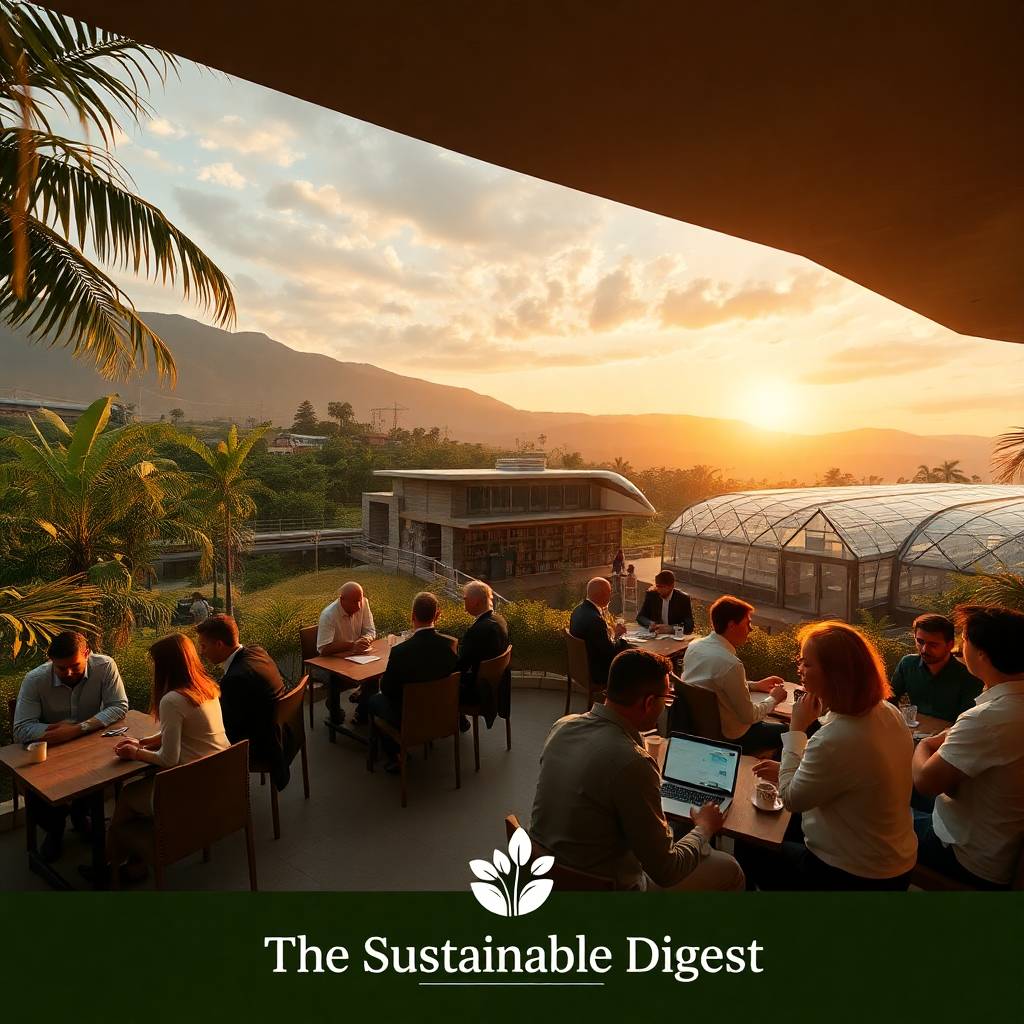
Key Takeaways
- Green building certifications measure a project’s commitment to sustainability and resource efficiency.
- Benefits of green building certifications include lower operating costs and improved public health outcomes.
- Sustainable building certifications like LEED and WELL guide eco-friendly design and construction decisions.
- Certifications boost property values while supporting global climate action goals.
- Builders and owners gain competitive advantages through recognized environmental design standards.



